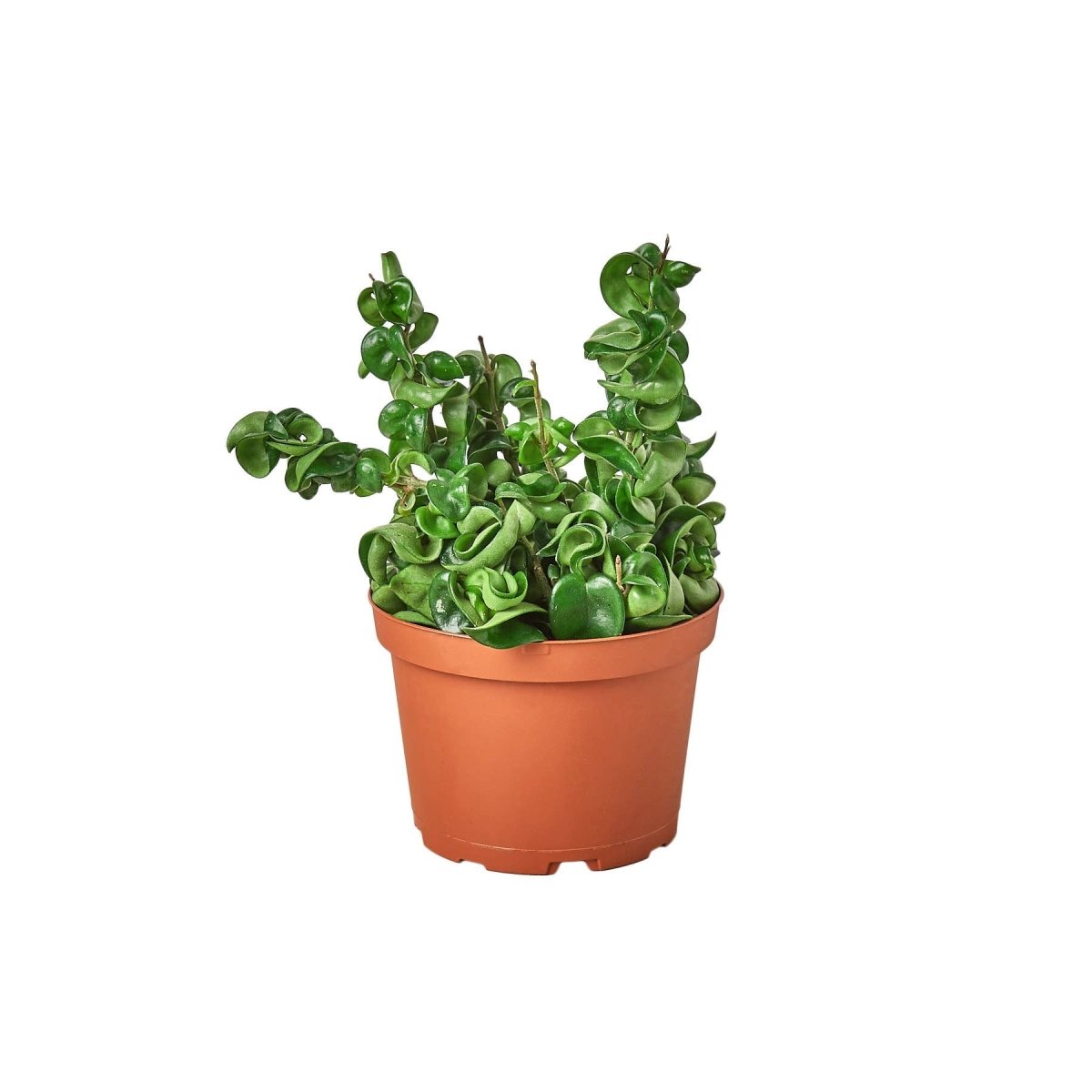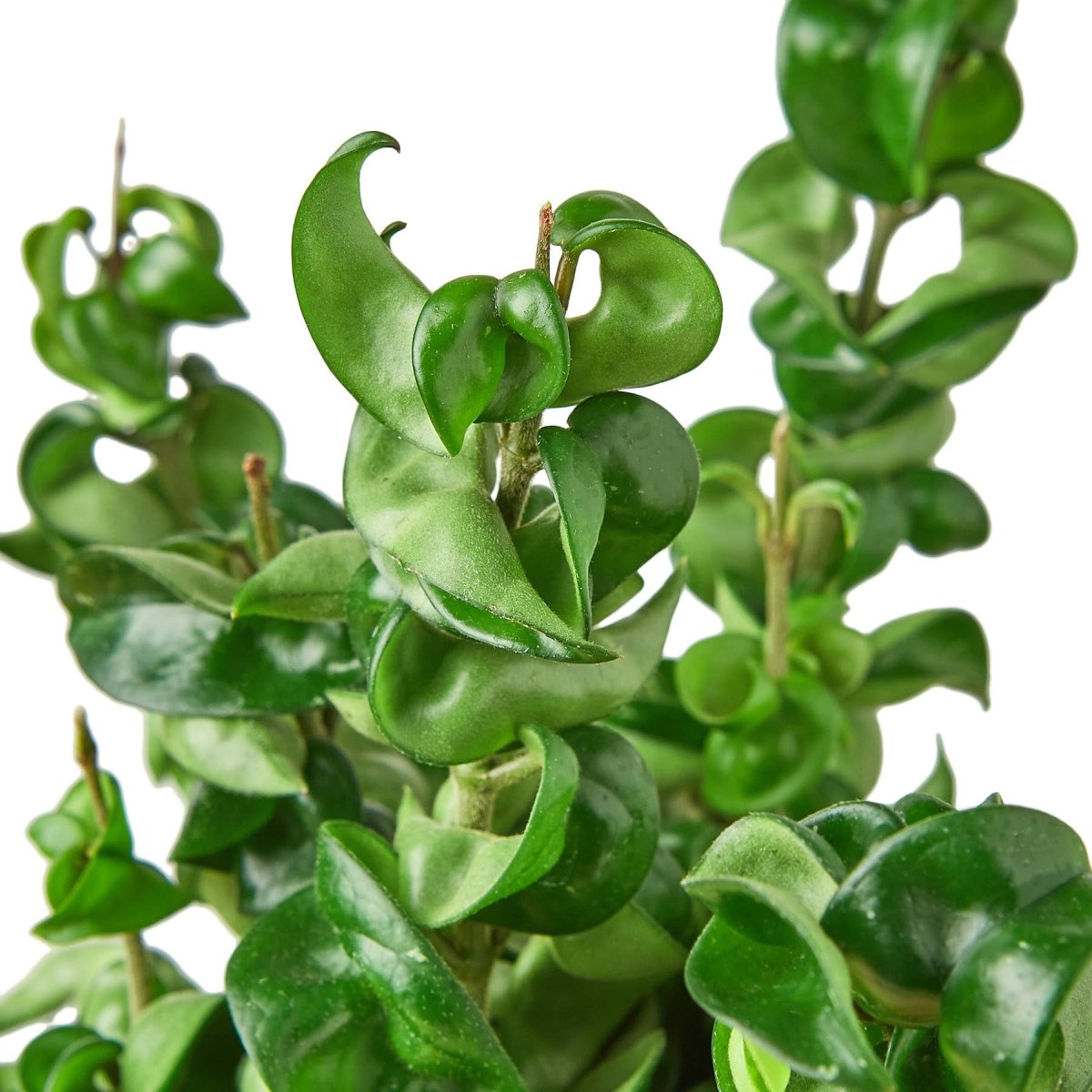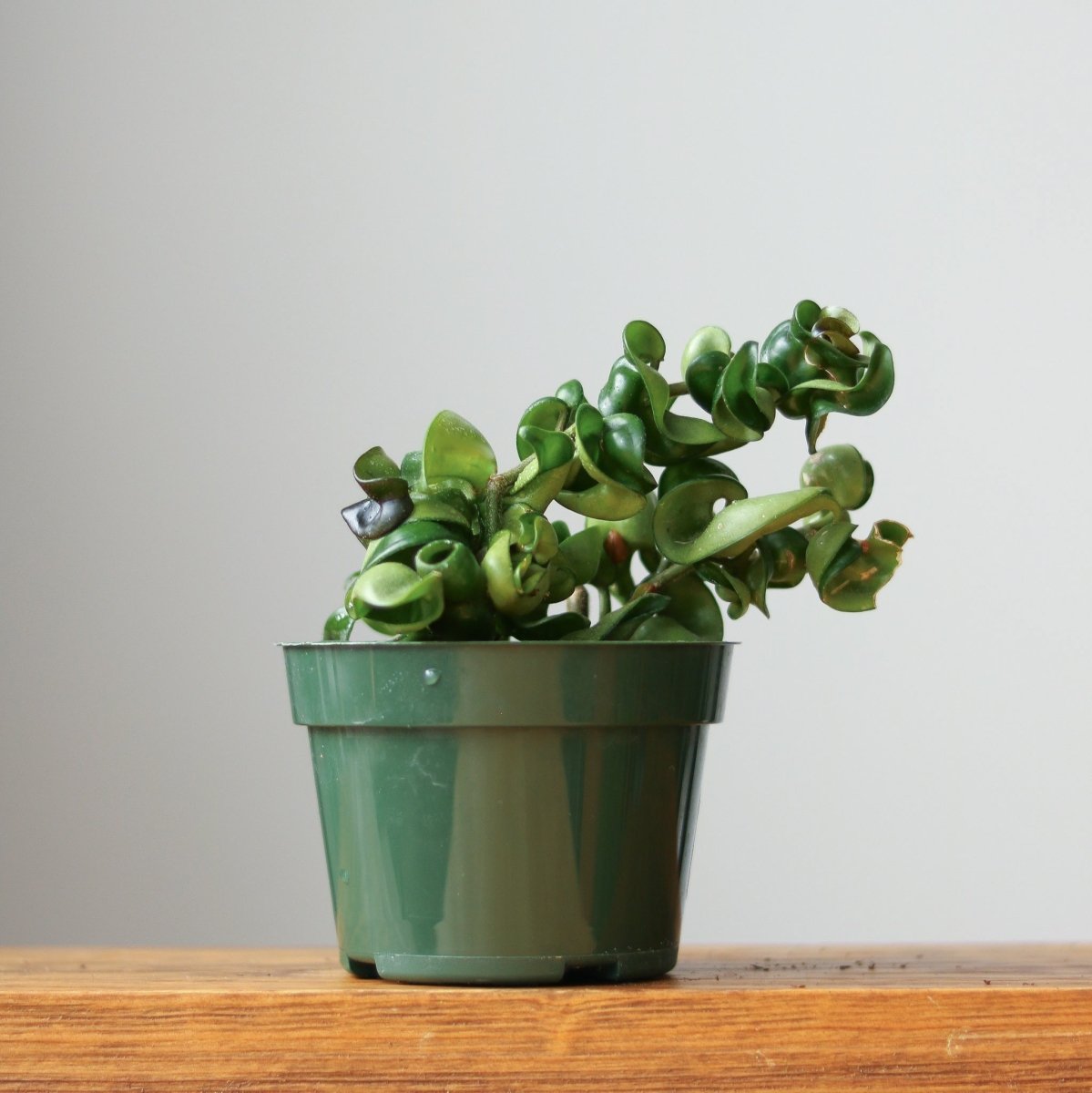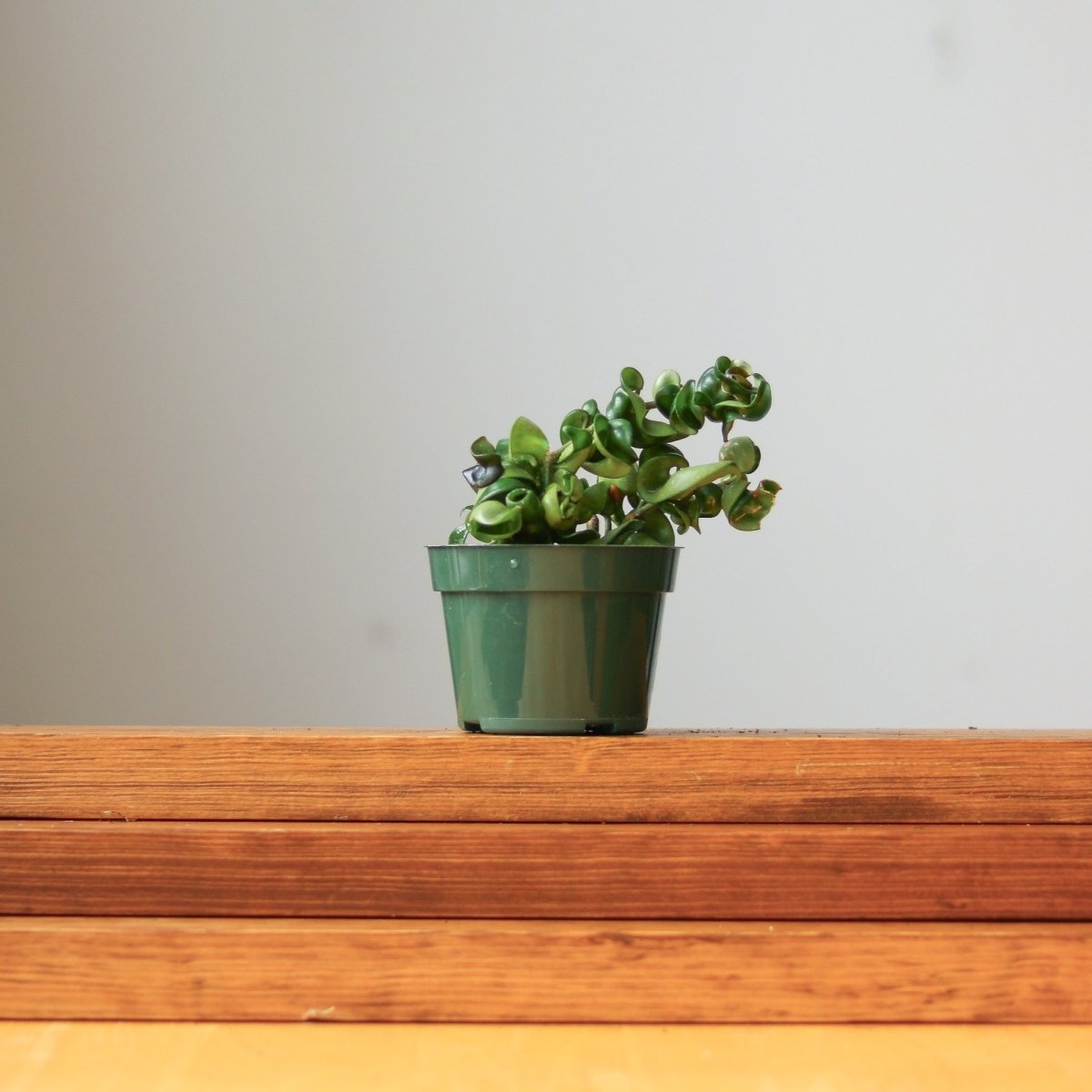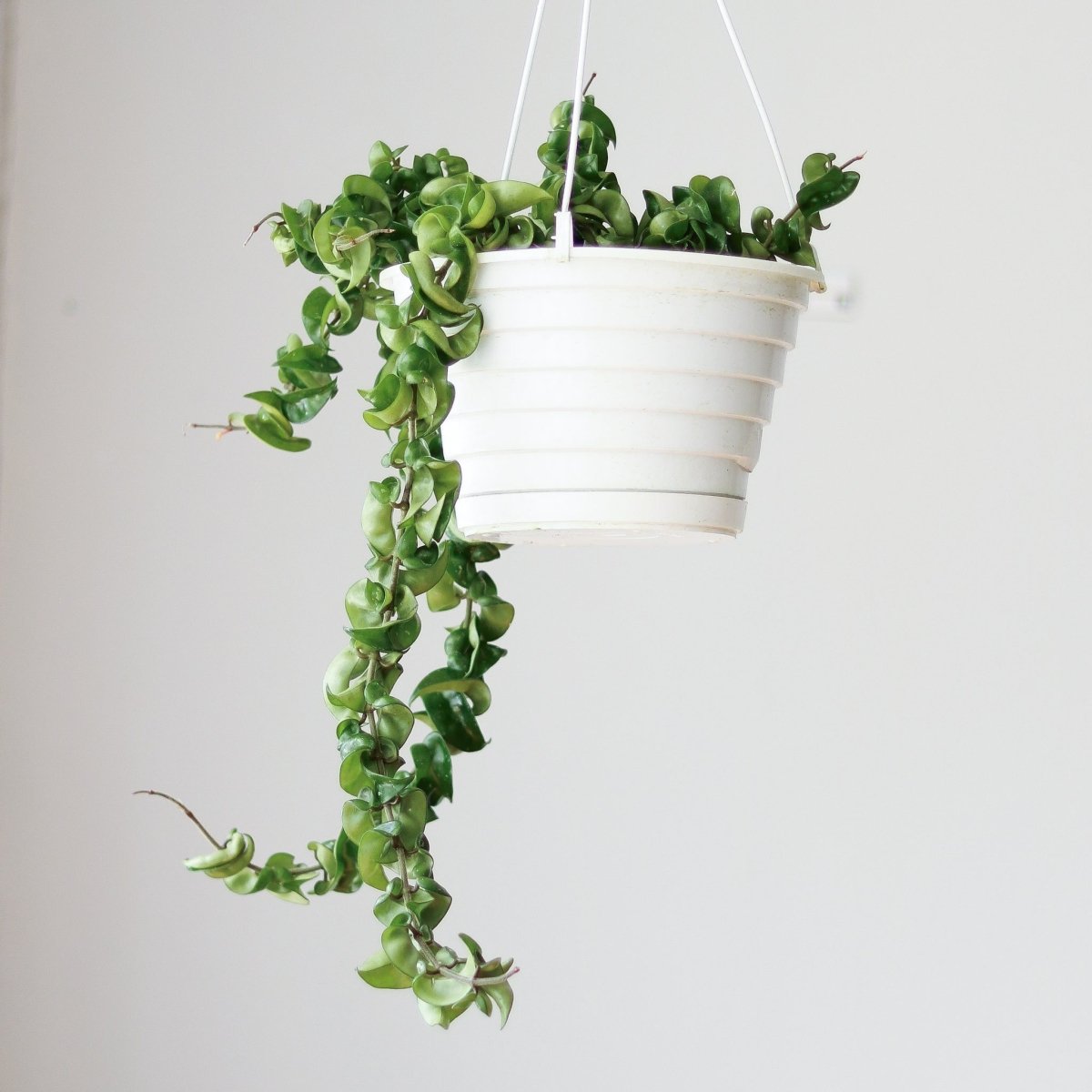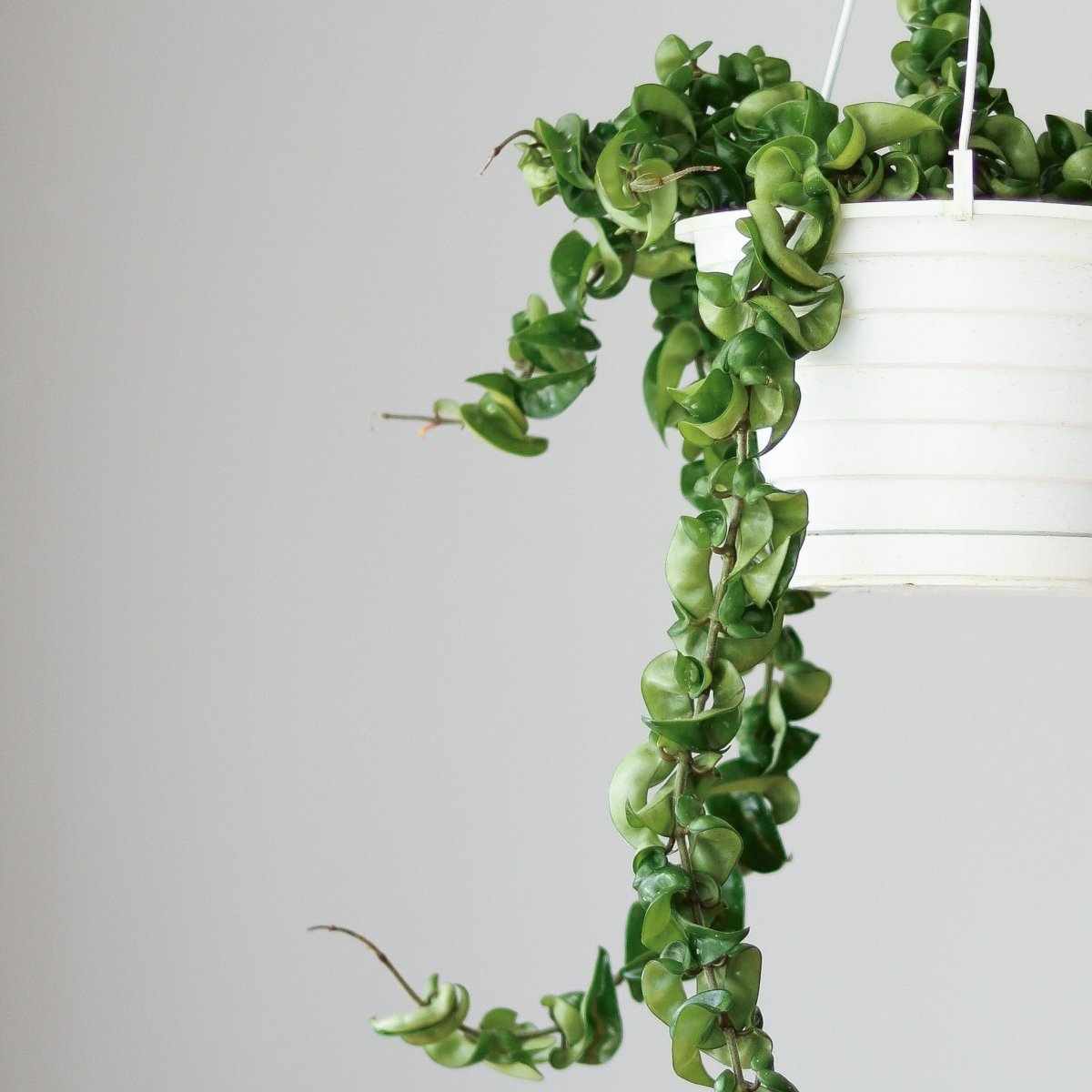Hoya Carnosa Compacta 'Hindu Rope'
Hoya Carnosa Compacta 'Hindu Rope' - 4'' Nursery Pot is backordered and will ship as soon as it is back in stock.
Couldn't load pickup availability
Description
Description
Hoya Carnosa Compacta ‘Hindu Rope’
The Hoya Carnosa Compacta, affectionately known as the Hindu Rope Plant, is a captivating cultivar in the Hoya genus—renowned for its uniquely twisted, cascading vines that resemble thick, rope-like strands. Its glossy, waxy leaves are densely curled and come in either rich dark green or creamy variegated forms, making this plant a living sculpture in any indoor space.
When mature, the Hindu Rope produces clusters of fragrant, star-shaped flowers—often pink with a red center. These blooms have a porcelain-like sheen and are so pristine they almost look artificial. With its sculptural form and rewarding floral display, it's no wonder this Hoya is among the most beloved varieties in cultivation.
Despite its exotic appearance, the Hindu Rope is relatively easy to care for and thrives with just a bit of attention. It's ideal for hanging baskets or trailing over shelves, but can also be trained vertically on trellises or mounted displays.
Plant Profile
- Botanical Name: Hoya carnosa 'Compacta'
- Pronunciation: HOY-yuh kar-NOE-suh kom-PAK-tuh
- Common Names: Hindu Rope, Krinkle Kurl
- Family: Apocynaceae
- Native Range: Southern India
Hindu Rope Plant Care
- Care Level: Moderate
- Light: Prefers 6–8 hours of bright, indirect light daily. Can tolerate lower light, but growth and flowering will be reduced. Avoid direct sun, which can scorch the leaves.
- Water: Allow the top 1–2 inches of soil to dry between waterings. Infrequent, but consistent watering is best—avoid letting the plant sit in water.
- Humidity: Tolerates average household humidity (50–75%) but appreciates a boost in more arid conditions.
- Temperature: Thrives in typical indoor temperatures between 55–85°F (13–29°C). Protect from cold drafts.
- Pruning: Prune lightly to remove dead leaves or encourage branching. Avoid removing flower spurs, as blooms return on old growth.
- Feeding: Fertilize monthly during spring and summer with a balanced, water-soluble houseplant fertilizer at half strength.
- Propagation: Stem cuttings root easily in water or soil.
- Growth Habit: Slow to moderate growth rate. Vining and trailing—perfect for hanging displays or climbing supports.
- Soil: Requires a well-draining potting mix, such as a chunky orchid or cactus mix amended with perlite.
- Pests: Watch for mealybugs, aphids, spider mites, and scale. Regular inspection helps prevent infestations.
- Toxicity: Considered non-toxic to humans and pets, though best kept out of reach as a precaution.
Want to Grow Your Hoya Like a Pro?
Check out our Hoya Care Guide for expert tips on keeping your plants lush, healthy, and blooming. Looking for pet-safe houseplants? Explore our Guide to Pet-Friendly Plants and build a green space the whole household can enjoy.
Keep Your Plants Cozy with Heat Packs
Frequently Asked Questions
Shipping
How do you ship your plants?
How do you ship your plants?
We carefully package each plant with love by hand right from our shop in Brooklyn. Extra steps are taken to ensure that every leaf arrives in pristine shape by using polyfill and encapsulating the plant in a protective paper sleeve. The soil is also hydrated before shipping so that the plant has plenty of water for it's travel to your doorstep. We offer several shipping speeds, so please choose the one that you feel comfortable with depending on your location.
Will my plant look like the one on the website?
Will my plant look like the one on the website?
Awesome question, we're glad you asked. Given the nature of our plant shop, we're constantly moving plants in and out of the shop, making it difficult and borderline impossible to keep an exact picture of each plant. In addition to the constantly rotating crop, we often grow in batches of 6, 12, or sometimes more! With this quantity we are unable to take a photo of each and every plant. The photos that we attach to each product listing is going to be of a plant that represents the average size and fullness of that set of plants. Some may be slightly larger or smaller, but in general, similar.
Do you include heat packs with your plants?
Do you include heat packs with your plants?
We offer Heat Packs for sale separately from the plants in 40, 60 and 72 hour increments. Please add a heat pack or two to your order if you live in an area where your order may be affected during transit by cold temperatures. We are not responsible for orders that are placed and damage is incurred to the plant if a heat pack is not purchased.
Which heat pack should I choose?
Which heat pack should I choose?
Heat packs come in three different increments, so please choose the appropriate hour increment depending on the speed of shipping that you choose during checkout. For example, if you choose a cheaper shipping option that will take longer, please select the 72 hour heat pack. If you've chosen a shorter method of shipping, the 40 or 60 hour increment would work! We like to encourage our customers to always get more than you need, just to be on the safe side!
How long will it take to receive my order?
How long will it take to receive my order?
Standard shipping normally takes 3-5 days. Next day shipping is available on all domestic orders (for an additional charge). International shipping times depend on the products and destination (estimated at checkout).
Do you offer express shipping?
Do you offer express shipping?
All orders are shipped 5-8 business days from the date it is placed. Please note that as a small plant shop, we do everything in our power to get orders out as fast as we can in the order that they come in. If you have circumstances that require expedited fulfillment, please connect with you and we can potentially offer options.
What countries do you ship to?
What countries do you ship to?
We ship our selection of rare, healthy, and unique houseplants all across the United States including California. At this time, due to customs and agricultural limitations, we are unable to ship plants internationally from the United States.
Returns and Refunds
How do I return a product?
How do I return a product?
Items must be returned within 30 days after receiving your order. Items must be returned in the same condition in which they were received, be unworn/unused, have any tags still attached, and include all the original packaging.
How long will it take to receive my refund?
How long will it take to receive my refund?
Refunds are processed within 7 days from when we receive the item(s).
What should I do if my plant arrives in poor shape?
What should I do if my plant arrives in poor shape?
In the extremely unlikely event that your plant arrives in less than perfect condition, you're covered by our 15-day plant health guarantee. Simply snap a photo of your plant and send it over to us. We'll happily take a peek and offer suggestions on how to perk it back up, offer a store credit, or send a replacement. We like to make it as easy as possible!
Can I return or exchange a plant?
Can I return or exchange a plant?
At this time, we do not accept returns on plants. In extreme circumstances where a return of a plant is necessary, the customer is responsible for the return shipping and a refund will only be issued if the plant arrives back to us in living condition.

